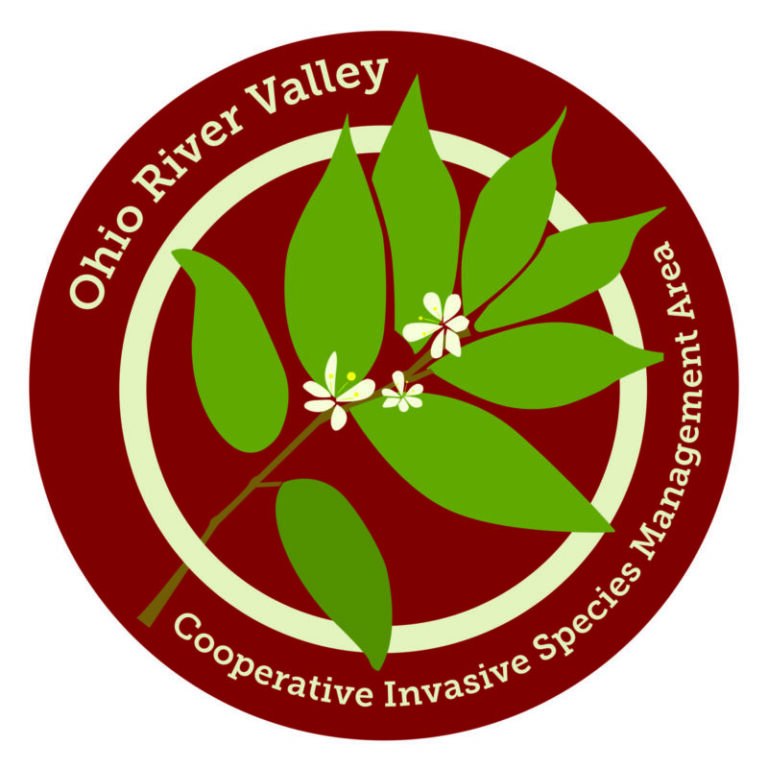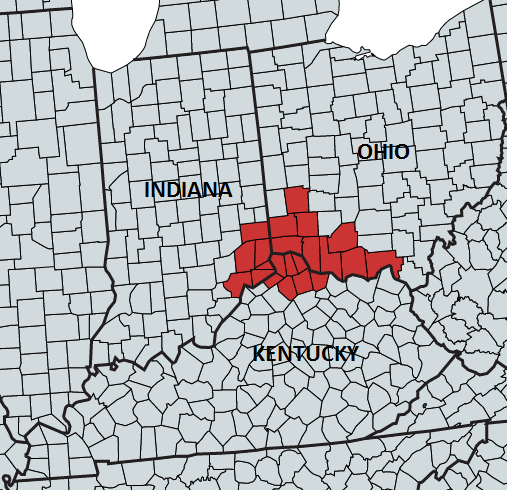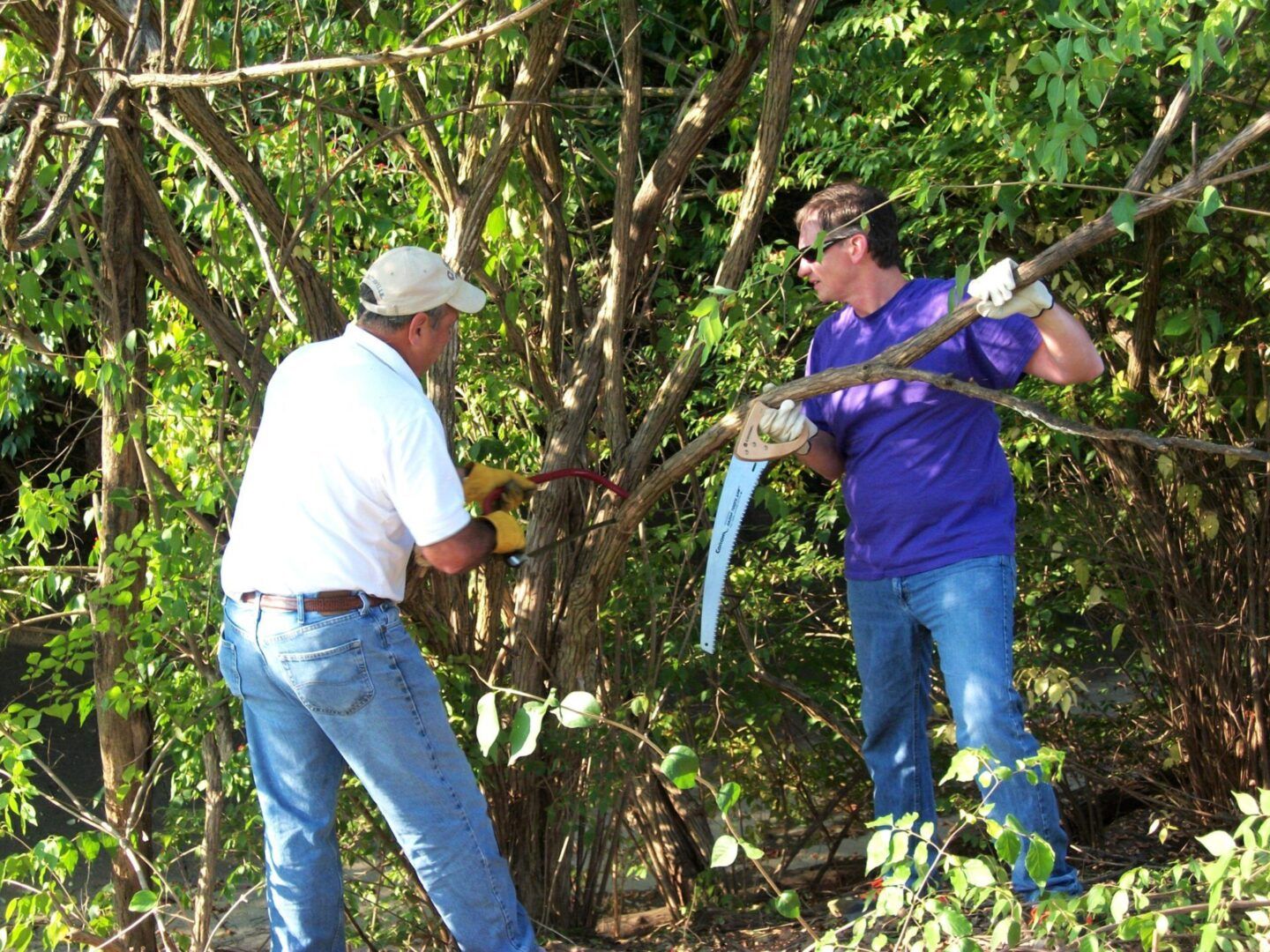Ohio River Valley Cooperative Invasive Species Management Area (CISMA)

In 2017, a coalition of 14 organizations, agencies, and groups formed the Ohio River Valley CISMA. This CISMA spans 22 counties and draws upon the technical expertise and knowledge of individuals with decades of experience in natural resource management and invasive species control. The ORV CISMA consists of urban, suburban, and rural areas spread throughout the Ohio River Valley; defined broadly as 9 Ohio counties (Adams, Brown, Butler, Clermont, Hamilton, Highland, Montgomery, Scioto, and Warren), 7 Kentucky counties (Boone, Bracken, Campbell, Gallatin, Grant, Kenton, and Pendleton), and 6 Indiana counties (Franklin, Dearborn, Ohio, Ripley, Jefferson, and Switzerland) for a total of 22 counties.
The entities represented on the steering committee are: Boone, Campbell, and Kenton County Conservation Districts, Boone National Forest, Natorp’s Nursery, Great Parks of Hamilton County, Cincinnati Parks, Clermont County Park District, Ohio Department of Agriculture, Ohio Invasive Plant Council, University of Cincinnati, Little Miami Conservancy, Oxbow Inc., Kentucky Nature Preserves Commission, and Cincinnati Nature Center.
A strategic plan has been adopted. GO TO ORV CISMA WEBSITE
ORV CISMA is now pursuing funding to implement the ORV CISMA Strategic Plan.
We are outnumbered.
Invasive plants are expanding across the landscape faster than people can stop them. Cooperative Weed Management Areas are how local groups can manage invasive plants across political boundaries for the benefit of all.
Plants are trickier than they look.
Plants have many survival strategies: some species have overcome many barriers to become a biological nuisance in habitats around the world. Understanding the life history of invasive species is the secret to successful management.
If this were easy, we wouldn’t be here.
Look before you leap! Invasive plants are formidable, resilient creatures. Knowing the options available for managing invasive plants is critical; using multiple methods increases the likelihood of success. For best results, you must know which method is the best fit for the situation.
We need to fix this together.
You can help prevent or control the spread of invasive plants on your own, or through a local conservation organization. CWMA partner organizations are working together successfully to protect local wildlands and waters.
What is a CWMA?
A Cooperative Weed Management Area (CWMA) is a partnership of federal, state, and local government agencies, tribes, individuals, and various interested groups that manage invasive species (or weeds) within a defined area. In different parts of the country, CWMAs are known by other names, including: Cooperative Invasive Species Management Area (CISMA), Partnership for Regional Invasive Species Management (PRISM), Weed Management Area (WMA), Invasive Species Teams, and Invasive Species Partnerships. Although these groups may be organized differently, they share six basic characteristics:
- CWMAs operate within a defined geographic area, distinguished by a common geography, weed problem, community, climate, political boundary, or land use.
- CWMAs involve a broad cross-section of landowners and natural resource managers within its defined boundaries.
- CWMAs are governed by a Steering Committee.
- CWMAs make a long-term commitment to cooperation, usually through a formal agreement among partners.
- CWMAs have a comprehensive plan that addresses the management or prevention of invasive species within its boundaries.
- CWMAs facilitate cooperation and coordination across jurisdictional boundaries.
CWMAs bring together local citizens, landowners, nonprofit organizations, industry, and city, county, state, tribal, and federal representatives to work towards a common goal—effective control of invasive species.
RESOURCES
Invasive Plants and Removal for Homeowners
Center for Invasive Species and Ecosystem Health https://www.invasive.org
Crooked River CWMA: http://crcwma.org/index.php/get-involved/cwma-members/





